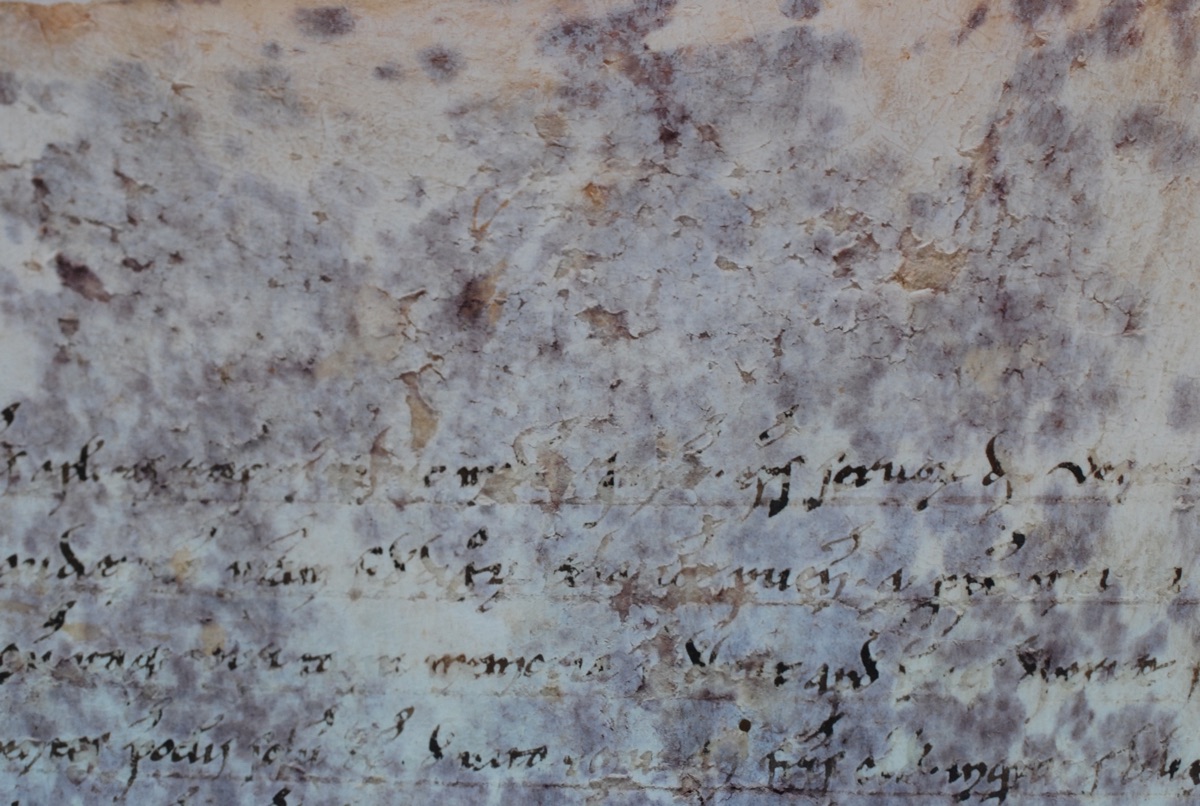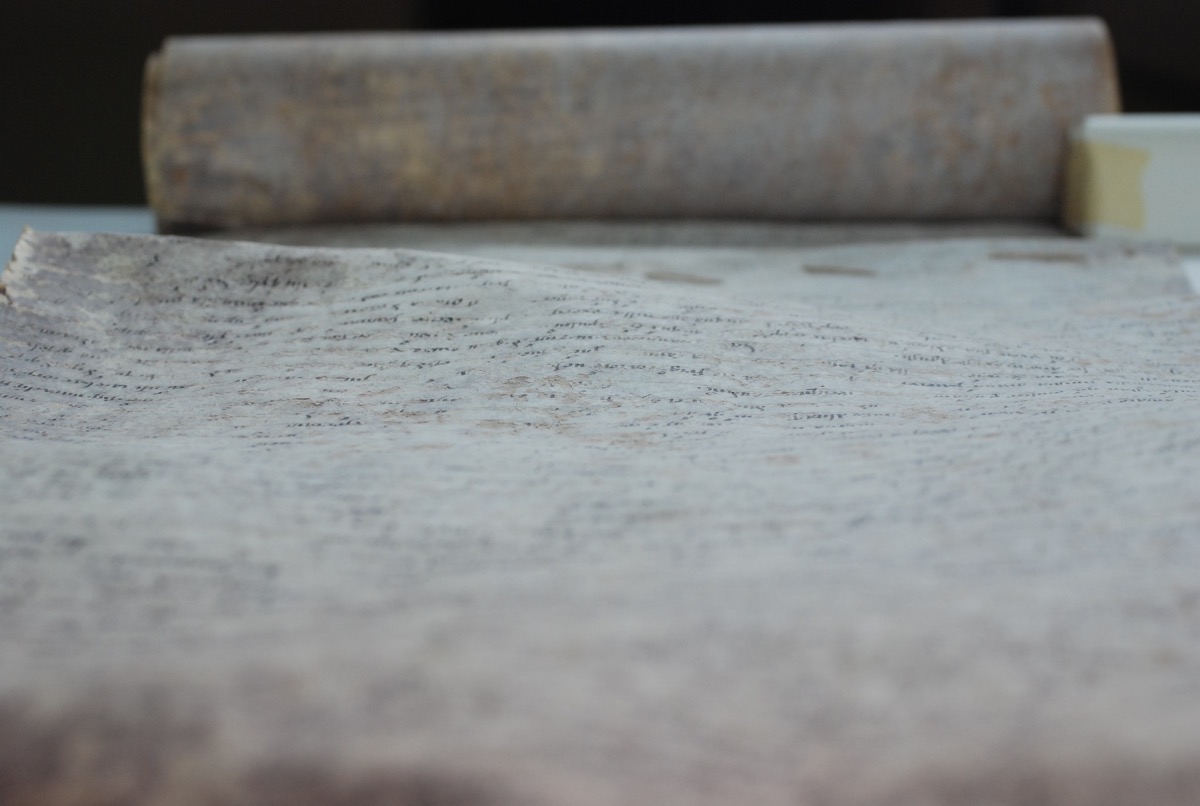Secret Vatican Manuscript's Mysterious Purple Spots Decoded
Loricatus' story is known today because the villagers near his cave petitioned for his sainthood on a 16-foot-long (5 meters) parchment that now resides in the Vatican Secret Archives in Vatican City. However, much of the scroll has been damaged by mysterious purple spots — and the spots are similar to ones that mar parchments made of animal skins all over the world, said Luciana Migliore, an ecotoxicologist at the University of Rome Tor Vergata.
Using Loricatus' scroll, Migliore and her colleagues have finally pinpointed the culprit that damaged all of these parchments: salt-loving marine microbes. This was a shock, Migliore said, because the parchment had been nowhere near the sea. [Cracking Codices: 10 of the Most Mysterious Ancient Manuscripts]
"When my students came to me, saying, 'Luciana, we found marine bacteria,' I told them, 'Repeat, please; there is a mistake. There must be a mistake!'" Migliore said.
Mystery bacteria
The surprising finding was the result of applying new technology to an old problem. Migliore is a toxicologist who usually works on marine plants. At a friend's behest, she started teaching biology in a conservation-and-restoration program.

"I thought that I could apply the techniques that I'm used to applying to underwater plants to scrolls and old documents," Migliore told Live Science. [7 Secrets of the Dead Sea Scrolls]
Specifically, Migliore wanted to use next-generation genetic sequencing to see if she could identify the microbes that eat away at old parchments. She and her team chose to restore the Laurentius Loricatus scroll both because of its gripping content and the beauty of the document itself.
The goatskin scroll, which dates to A.D. 1244, has purple dots all along its margins, and the first and last pages are entirely obscured by the mystery pigment. Migliore's team sampled a few millimeter-size bits of the scroll that had already flaked off. They sent these samples to a lab in the United States that does fast, cheap gene sequencing.
Sign up for the Live Science daily newsletter now
Get the world’s most fascinating discoveries delivered straight to your inbox.
Inside job
The findings showed much more genetic diversity, indicating a wider range of microbes, in the purple spots than in the undamaged areas of the parchment. The genetics told a two-stage story of damage: First, salt-loving, or halophilic, bacteria colonized the parchment. Next, salt-tolerant microbes, particularly the Gammaproteobacteria, took over. What shocked Migliore is that so many of these microbes were marine or aquatic.
But when they took into account how skin scrolls were made, the discovery made sense, Migliore said. The first step after removing the hide from an animal was to bathe the skin in a sea-salt bath to help preserve it, she said. This bath would have killed off most microbes that eat away at flesh — but it also introduced salt-loving and salt-tolerant marine bacteria. These little microbes huddled in the middle layers of the parchment, where the salinity was just right. When the scroll was read and stored at various monasteries throughout its lifetime, changes in temperature and humidity would have allowed the salt-loving bacteria to grow and thrive. Many of these species produce purple pigments, Migliore noted.
Eventually, though, those salt eaters would have seen their supply run out and died off. Their corpses, Migliore said, provided a whole new source of food for the next phase of bacterial colonization. The Gammaproteobacteria moved in and ate not only the dead halophilic bacteria but also the fine collagen matrix of the goatskin parchment. This caused parts of the parchment to flake off, lost forever.

Salt curing is one thing that skin parchments around the world have in common, Migliore said, so it makes sense that similar damage is seen in scrolls from all sorts of regions and time frames. (Loricatus' scroll is currently safe from further damage, as it has been kept in climate-controlled conditions since its move to Vatican City in the late 1700s.)
There's no reversing the damage to the parts of the parchment where the underlying collagen was eaten away, Migliore said. There may still be a way to remove the purple pigments, though. She and her team are working to determine the pigment structure now.
"In this way, this work opens new perspectives, because we have to study to see if it is possible to make something of this parchment," Migliore said.
The researchers reported their findings today (Sept. 7) in the open-access journal Scientific Reports.
Original article on Live Science.

Stephanie Pappas is a contributing writer for Live Science, covering topics ranging from geoscience to archaeology to the human brain and behavior. She was previously a senior writer for Live Science but is now a freelancer based in Denver, Colorado, and regularly contributes to Scientific American and The Monitor, the monthly magazine of the American Psychological Association. Stephanie received a bachelor's degree in psychology from the University of South Carolina and a graduate certificate in science communication from the University of California, Santa Cruz.










